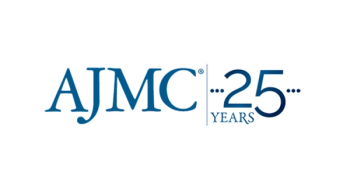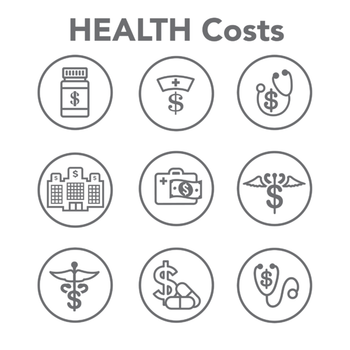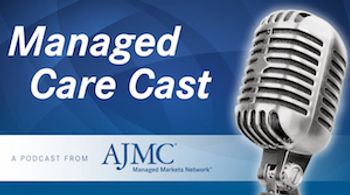
Employers
Latest News

Latest Videos
CME Content
More News

According to Bruce Sherman, MD, chief medical officer of the National Alliance of Healthcare Purchaser Coalitions, there are several ways that employers can alleviate the impacts of co-pay accumulator adjustment programs on their employees, including by increasing awareness of the programs, expanding preventive drug lists, subsidizing benefits for low-income workers, and considering the true financial impact of these programs.

Workers with health insurance through their jobs saw out-of-pocket costs rise 14.5%, or $114, between 2014 and 2018, and also increased the use of psychiatry services and substance use facilities.

The evolution of data in healthcare in combination with policy advancements demonstrates how far the field has come but also brings up new challenges.


A study shows young adults prefer short-term perks to long-term benefits; $4 million has been stolen from Mississippi's welfare fund; Los Angeles has reported 5 confirmed cases of measles.

While co-pay accumulator programs may appear to save employers money, they may lead to medication nonadherence if a prescription becomes too expensive for a patient to fill, which could potentially result in higher expenditures, cautioned Bruce Sherman, MD, chief medical officer of the National Alliance of Healthcare Purchaser Coalitions.

This week's paper from our editors-in-chief presented the idea of tying a prescription drug's cost-sharing to its clinical value to the patient.

V-BID X for Employers: A Framework Designed to Promote Employee Access to High-Value Drugs, Services
A. Mark Fendrick, MD, director of the Center for Value-Based Insurance Design (V-BID) at the University of Michigan and co-editor-in-chief of The American Journal of Managed Care®, and Suzanne F. Delbanco, PhD, executive director of Catalyst for Payment Reform, discuss V-BID X for employers, a plan constructed through benefit-design and payment reform that works to promote high-value services and deter low-value care.

Researchers from the Employee Benefit Research Institute (EBRI) estimate that if hospital unit prices matched physician office (PO) prices of cancer drugs, holding drug mix and treatment intensity constant, commercial insurers would have saved $9766 (45%) per user of these medicines in 2016, with statistically significant relative differences ranging from 128.3% (nivolumab) to 428% (fluorouracil).

Co-pay accumulator adjustment programs are meant to ensure that individuals are responsible for the full amount of their insurance deductible, which should help promote healthcare consumerism, according to Bruce Sherman, MD, chief medical officer of the National Alliance of Healthcare Purchaser Coalitions.

Innovaccer’s survey-based report titled, “The Science of Value-based Care: An Industry View,” details the current state of readiness of healthcare organizations in employing value-based care, while also providing tips on how minor changes in one’s system framework can contribute to clinical excellence and technical efficiency.

Population health models that include social determinants of health can help employers design more strategic benefits that will provide an effective solution for all individuals who receive that insurance, said Bruce Sherman, MD, chief medical officer of the National Alliance of Healthcare Purchaser Coalitions.

Rising drug costs in the United States are a pressing concern not only for patients who need to receive those drugs, but also for employers. The Employers’ Prescription for Affordable Drugs is a coalition that aims to tackle this problem by working with policy makers and stakeholders to encourage and facilitate more transparency, competition, and value in the healthcare system.

Along with weight loss, exercise, and nutrition, employers now target sleep improvements in employees; a Republican member of the FTC supports Medicare drug price negotiations; sepsis is likely responsible for 20% of deaths worldwide.

Dr Bruce Sherman: Adding Nuance Can Make Value-Based Insurance Design More Impactful for Employers
Making benefit design more nuanced through the inclusion of employee variables could help increase the impact of value-based insurance design for employers, said Bruce Sherman, MD, chief medical officer of the National Alliance of Healthcare Purchaser Coalitions.

On this episode of the podcast, we speak with Peter Bonis, MD, chief medical officer, Clinical Effectiveness, Wolters Kluwer Health, which recently released the survey, Mending HealthCare in America 2020: Consumers & Cost.

An array of different techniques, including direct primary care, are being used by employers to manage healthcare costs while keeping care affordable for employees, according to Bruce Sherman, MD, chief medical officer of the National Alliance of Healthcare Purchaser Coalitions.

In MassMutual’s 2019 Workplace Financial Wellness Study, survey data gathered by Greenwald & Associates reported that a large majority of employers believe their employees are struggling financially in saving for retirement, settling debt, and dealing with medical costs.

Employers’ decisions around purchasing healthcare plans should focus on a broader measure of value, including employee productivity, not just cost, according to Bruce Sherman, MD, chief medical officer of the National Alliance of Healthcare Purchaser Coalitions.

Bret Jackson Discusses Upcoming Challenges of Paying for Specialty Drugs, Therapeutic Advancements
A major upcoming challenge in healthcare will be determining how to pay for specialty drugs and medical advancements like cellular therapies, said Bret Jackson, president of the Economic Alliance for Michigan.

In a news brief published by AHIP, initiatives employed by health insurance providers AmeriHealth Caritas, Geisinger, Horizon Blue Cross Blue Shield of New Jersey, and UPMC plan to address issues ranging from the opioid crisis to behavioral healthcare access.


The FDA approved [fam-] trastuzumab deruxtecan-nxki, which will be marketed as Enhertu; preliminary CMS numbers show that 8.3 million people enrolled in coverage under the Affordable Care Act (ACA) from November 1 to December 17, about 2% fewer than last year; Sutter Health agreed to pay $575 million to settle claims of anticompetitive behavior brought by the California state attorney general as well as unions and employers.

Progress toward value-based payment models is moving slowly, so employers and healthcare systems need to recognize the value of taking on risk and encourage surrounding entities in their communities to do the same, said Bruce Sherman, MD, chief medical officer of the National Alliance of Healthcare Purchaser Coalitions.

The National Business Group on Health released its list of healthcare trends to watch in 2020, highlighted by growing employer initiatives on high quality, high value healthcare, and an increased focus on mental health issues.









































